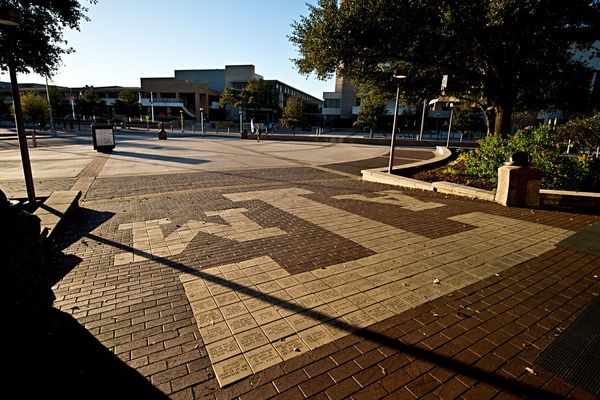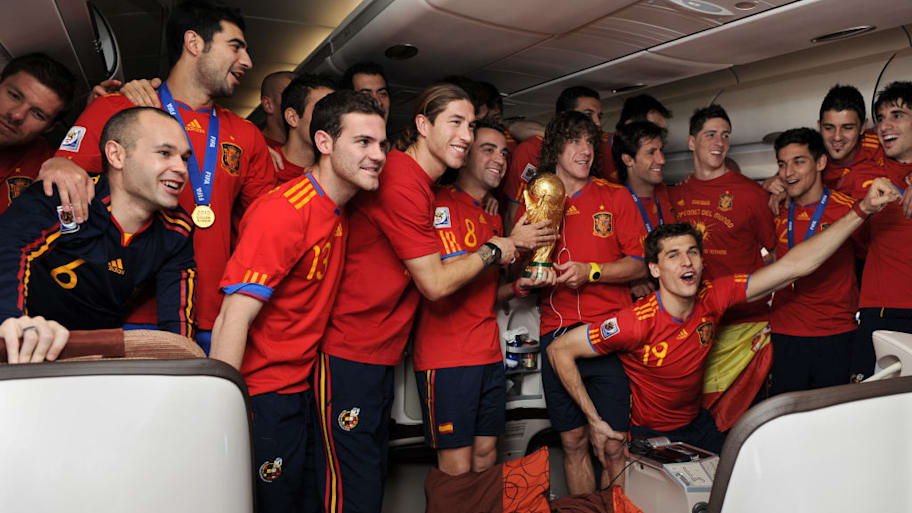
Going into the 2010 World Cup, the first edition of the historic tournament to be staged in Africa, no country had held the European Championship and World Cup trophies concurrently since Germany in 1974. After ending a 44-year international drought at Euro 2008, Spain were looking to change that.
La Roja had never won the World Cup before and until two years earlier were known as one of international football’s biggest chokers since being crowned European champions in 1964.
Prior to 2010, Spain’s best World Cup performances were quarterfinal exits in 2002, 1994 and 1986, since finishing fourth in 1950 when, unlike today, there was a four-team round-robin for the final stage, rather than a conventional knockout bracket.
After yet more disappointment followed a strong start at the World Cup in 2006 and partway through a near disastrous Euro 2008 qualifying campaign almost cost them a place at that tournament, everything changed. A shift in style from manager Luis Aragonés, who passed away in 2014, favouring more technically-minded ball-playing talents over physicality, and a greater cohesiveness after decades of alleged regional rifts within the team, finally gave Spain their platform.
After sweeping to victory at Euro 2008, Spain, by now under the guidance of two-time Champions League winner and Real Madrid legend Vicente del Bosque, actually opened the 2010 World Cup with a shock defeat to Switzerland—until Argentina followed suit in 2022, they were the only team to lose their first match and still go on to win a World Cup.

That was quickly rectified with 2–0 and 2–1 group stage wins over Honduras and Chile respectively, setting up a last 16 encounter with Iberian neighbours Portugal. The 1–0 score-line, decided by David Villa in the second half, was then replicated again and again all the way to the end.
Paraguay fell 1–0 to a late goal in the next round, followed by another single-goal victory against Germany, also decided towards the end, in the semifinals. An infamously aggressive approach from the Netherlands in the final in Johannesburg still didn’t upset Spain’s rhythm, although it required extra-time to secure the vital goal, scored by Andrés Iniesta, to seal fourth straight 1–0.
Spain became the first new winner of a World Cup tournament on foreign soil since Brazil triumphed in Sweden in 1958, and only the eighth different victor overall.
Del Bosque selected 23 history-makers in 2010, but—at the time of writing—where are they now?

Goalkeepers
Iker Casillas
He remained with Real Madrid until 2015, ending his career there after 725 appearances and moving on to Porto, where he retired in 2020, a year after suffering a heart attack. These days, Casillas serves his former club as director general of the Real Madrid Foundation, as well leading 1K FC in the 7-a-side Kings Cup and Queens Cup tournaments, and branding himself a sports tech investor.
Víctor Valdés

Barcelona’s Valdés spent many years being overlooked by the national team but finally made his debut at the age of 28 in the build-up to the World Cup. At the tournament itself, he was a back-up and didn’t make it onto the pitch. After an ACL injury effectively ended his Barcelona career in 2014, he played with limited success for Manchester United, Standard Liège and Middlesbrough.
In retirement, Valdés has gone into coaching without making much impact. He was briefly given control of Barcelona’s Under-19 team in 2019, but was sacked within a few months after internal disagreements, and has since managed in Spain’s lower leagues. Most recently, he had a four-game stint in charge of fourth-tier Real Ávila earlier in 2025.
Pepe Reina
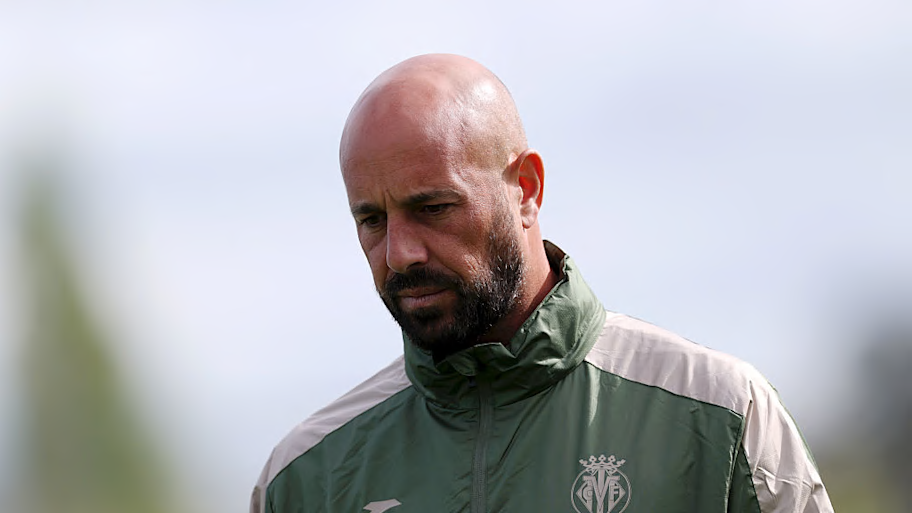
Reina was the other non-playing goalkeeper in the squad, contracted to Liverpool at the time of the World Cup and arguably one of the best stoppers in the Premier League. His career since being questionably displaced at Anfield by Simon Mignolet in 2013 took him to Napoli, Bayern Munich, AC Milan, Aston Villa, Lazio, a return to previous club Villarreal and, lastly, Como.
His 988th and final senior game came with Como at the age of 42 in May 2025, against Inter, and ended prematurely with a red card in the first half. He has since become a Villarreal academy coach.
Defenders
Raúl Albiol
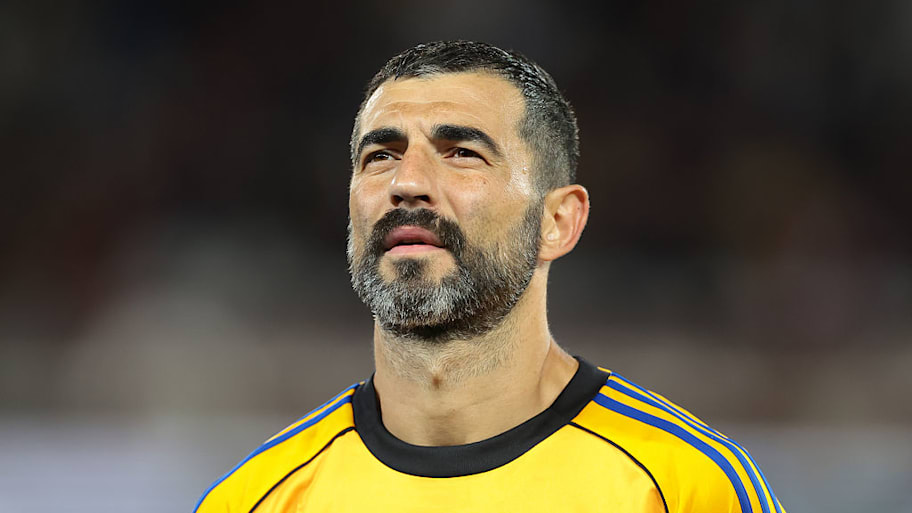
Signed by Real Madrid in 2009, Albiol was a regular starter at club level but didn’t make it on to the pitch at the World Cup. He was also soon relegated to a back-up role at the Bernabéu and left Los Blancos in 2013 after 119 appearances in four years.
The centre back helped Napoli win the Coppa Italia in 2013–14, before a five-year stay at Villarreal that only ended in 2025. At the age of 40, he then signed with newly promoted Pisa in Serie A.
Gerard Piqué
Barcelona
Piqué was already flexing his business muscles before hanging up his boots, co-founding a sports and media investment firm in 2018. One of the company’s projects is Andorra FC, competing in 2025–26 in Spain’s second tier, while the former centre back set up the Kings Cup and Queens Cup in 2022. He has also been heavily involved in esports.
Carlos Marchena
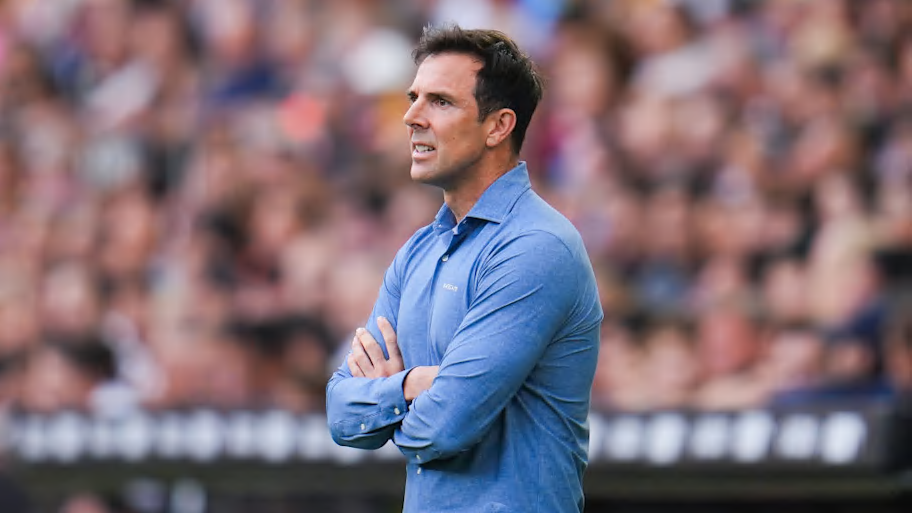
Marchena made two late substitute appearances at the World Cup, coming off the bench late on against both Portugal and Paraguay to help see through each knockout win. The defender left Valencia that summer after nine years, playing for Villarreal and Deportivo La Coruña, before a final career appearance for Kerala Blasters in India in 2015.
In the decade since, he has held assistant coaching role with Sevilla C, Sevilla B, Spain and Valencia. As of 2025, he oversees his own academy, Academia CM.
Carles Puyol
Puyol was a one-club man, ending his career with Barcelona in 2014. He had a short stint as assistant director of football at Camp Nou that ended with resignation in 2015, but has remained a visible ambassador and supporter of the club in the decade since.
Joan Capdevila
Capdevila came through the ranks at Espanyol and also had a spell with the Barcelona-based club later in his career. He now works there as head of institutional sports relations.
Sergio Ramos
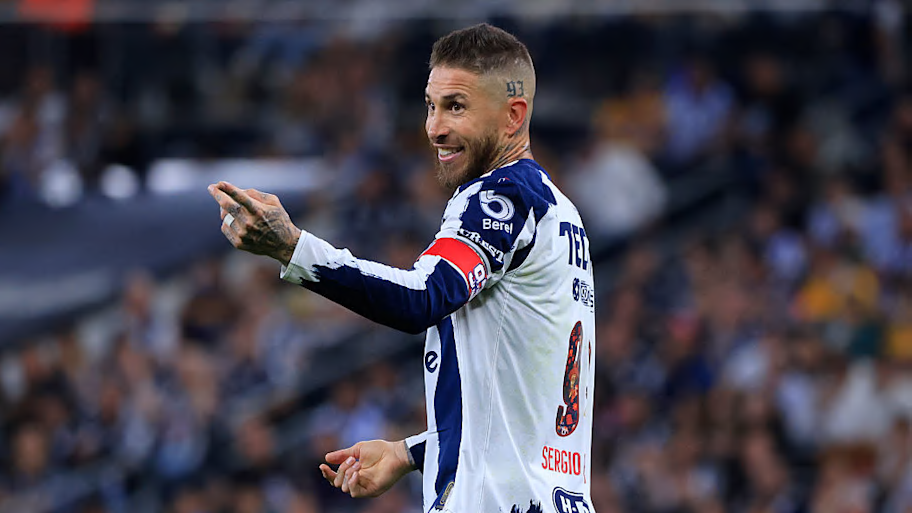
Although throughout his career as one of the greatest centre backs of all-time, Ramos usually had to make do with a right back spot when it came to Spain duty until Carles Puyol’s last cap in 2013. Another who was booked early in the final, he also started every game.
After winning four Champions League titles with Real Madrid, leaving after 671 games, Ramos had a two-year spell at Paris Saint-Germain, before returning to boyhood club Sevilla, and then venturing to Mexico. In 2025, he is the second year of a two-year contract with Monterrey.
Álvaro Arbeloa
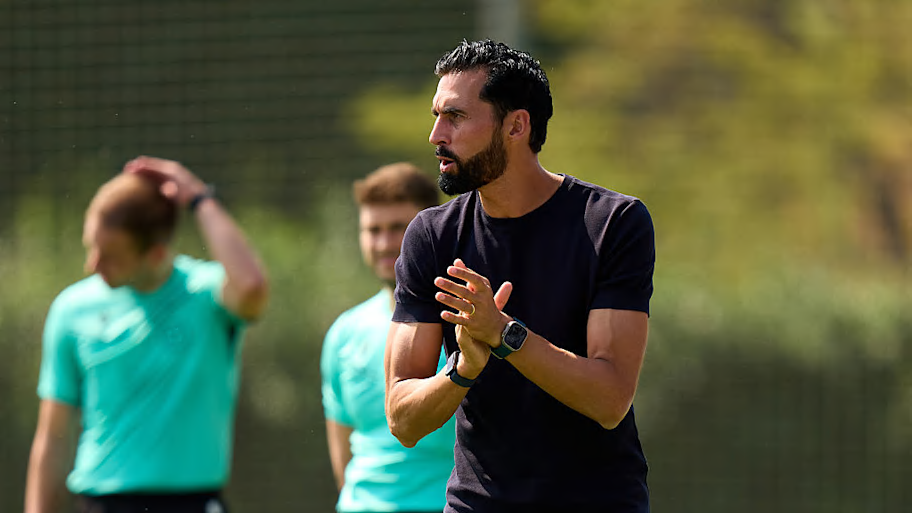
Just 13 minutes at the end of the group stage win over Honduras is all Arbeloa was afforded during the tournament, such was the stability of del Bosque’s favoured back four. His club career had taken him from Liverpool to Real Madrid in 2009 and he stayed there until 2016.
After four games back in England for West Ham United, Arbeloa retired in 2017 and moved into coaching. He began managing sides in Real Madrid’s academy from under-14 level in 2020, eventually replacing club legend Raúl as Real Madrid Castilla boss in 2025.
Midfielders
Andrés Iniesta
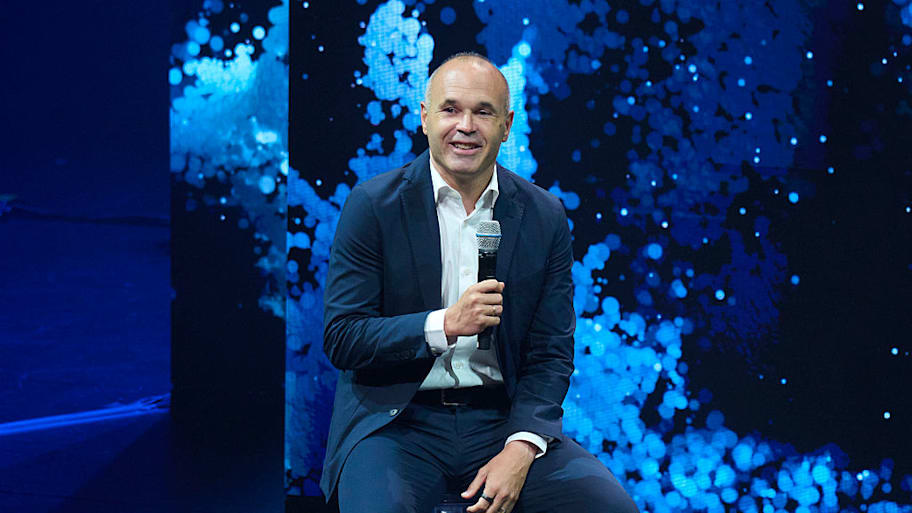
As scorer of the winning goal in a World Cup final, Iniesta might have achieved the single greatest thing possible in the realm of professional football. He was already a legend in the making at Barcelona, departing Camp Nou in 2018, aged 34, and opting for a new kind of challenge at Vissel Kobe in Japan, where he spent five more years.
Iniesta’s final career stop came at Emirates Club of the UAE Pro League during the 2023–24 campaign, announcing his retirement, having turned 40, shortly afterwards. He has a number of business ventures on the go, including a self-titled academy, and a footwear brand.
Xavi
Qatar was the destination, playing for Al Sadd for four years until 2019 and then becoming manager for two. He took over back at Barcelona in 2021, at the peak of the club’s financial crisis, but went on to deliver a first La Liga title in four years in 2022–23. Xavi decided he wanted to quit at the end of 2023–24, but was persuaded to stay, only to then be fired anyway. As of 2025, he hasn’t returned to a direct role in football, but is a global ambassador for La Liga and adidas, and continues Campus Xavi.
Cesc Fàbregas
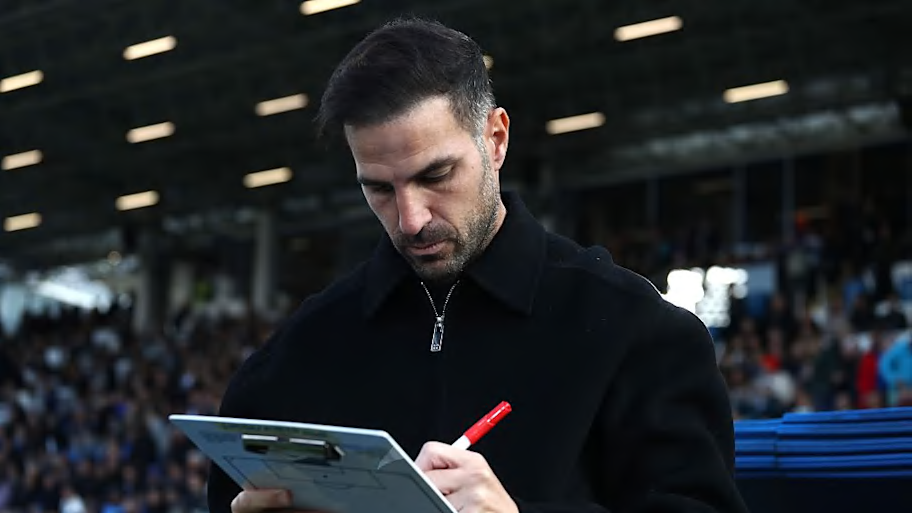
Del Bosque didn’t start Fàbregas at the World Cup, but the boss turned to the then Arsenal midfielder early in the second half for the wins over Honduras, Chile and Paraguay. He also came on towards the end of the final and played the entire extra-time period.
A much-talked about return to Barcelona happened in 2011—his Spain teammates had forced him into a Blaugrana shirt during the 2010 celebrations—but it was short-lived and he joined Chelsea in 2014. Spells with Monaco and Como followed, retiring in 2023 and appointed manager of the highly ambitious latter a year later.
Juan Mata
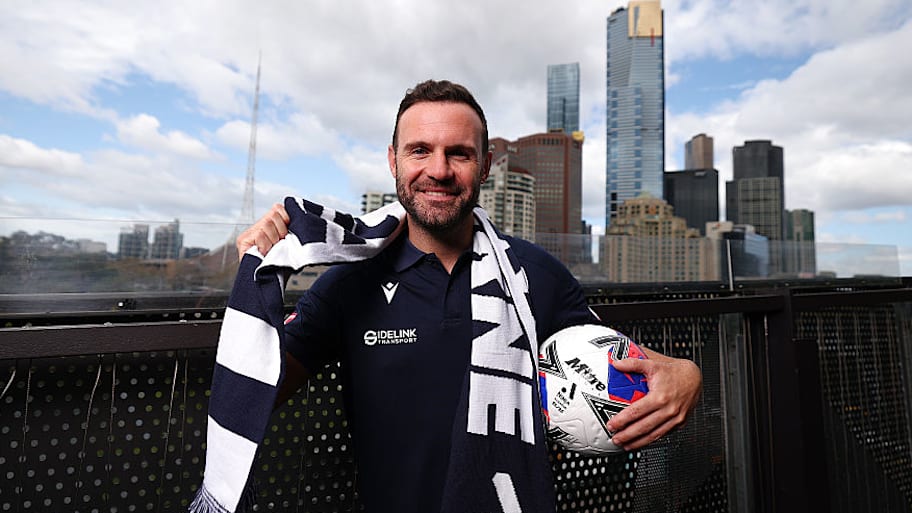
At 22, Mata was the third youngest member of Spain’s squad in 2010. He played only 20 minutes against Honduras, but his club career really took off in 2011 following a move to Chelsea, where he was a two-time player of the year. Manchester United made the creator their record signing in 2014, spending eight years at Old Trafford.
Mata continued his playing career by joining Galatasaray in 2022, then played a single game for Vissel Kobe in 2023 and has since moved to Australia. After a season, with Western Sydney Wanderers, he joined Melbourne Victory ahead of the 2025–26 campaign.
Xabi Alonso
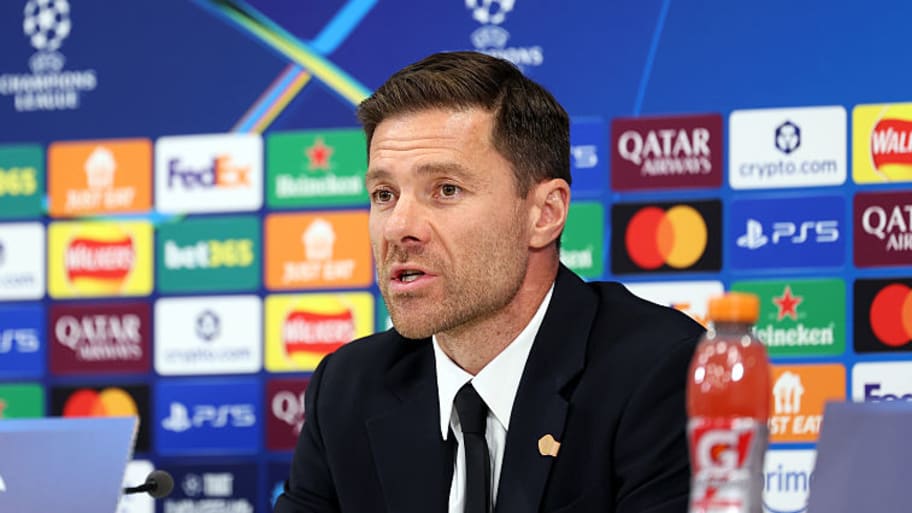
Alongside Albiol and Arbeloa, Alonso was among the Spanish stars recruited during Real Madrid’s aggressive recruitment drive in 2009. He was another who started every World Cup game, playing virtually every minute at that. Infamously, the passing maestro was the one on the receiving end of Nigel de Jong’s chest-high tackle in the final, only punished by a yellow card.
Alonso’s club career thereafter took him from Spain to Bayern Munich and, after cutting his coaching teeth with Real Sociedad B, returned to Germany to lead Bayer Leverkusen. A historic 2023–24 season delivered a first ever Bundesliga title, one half of an undefeated domestic double, but he turned down the chance to manage Liverpool. Instead, he joined Real Madrid in 2025.
Sergio Busquets
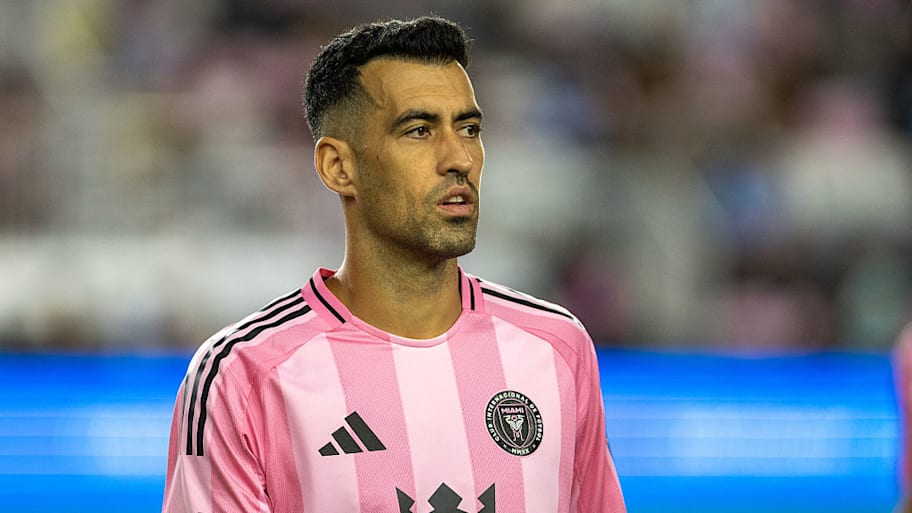
The 2025 Major League Soccer season is the last of Sergio Busquets’ illustrious career, announcing his intention to retire from playing at the end of Inter Miami’s MLS Cup playoff run. The 37-year-old, who turned 22 five days after the 2010 World Cup final, had previously won it all for Barcelona.
Busquets only had two seasons and 93 senior games under his belt by the time of the tournament but was virtually undroppable. The only minutes of the whole World Cup that he missed came an hour into the opener against Switzerland when Del Bosque swapped him for striker Fernando Torres.
Javi Martínez
Bayern Munich triggered a sizeable release clause in his Athletic Club contract in 2012, leading to a nine-year stay in Bavaria that was ultimately limited to 268 appearances by injuries. Upon moving on from Bayern, he joined Qatar SC, and has been with Al Bidda—also in Qatar—since July 2025.
David Silva
Manchester City
City announced an agreement with Valencia while the World Cup was ongoing and Silva spent a decade in Manchester, becoming a legend. He moved on to Real Sociedad in 2020, but retired six days after suffering an ACL injury in July 2023. There has been no formal role in football since, although his social media presence shows that he’s a keen padel player.
Jesús Navas
The winger, turned right back later on, played 705 times for boyhood club Sevilla across two spells, also winning four Europa Leagues, and was still going until retiring at the age of 37 in 2024. Leaving football for the moment at least, he’s had the time to pursue other hobbies, including cycling.
Forwards
David Villa
Villa went on to win La Liga titles with Barcelona and Atlético Madrid, plus the Champions League with the former. He then scored 80 goals in 126 games for New York City FC, named MLS MVP for the 2016 season, and had a year with Vissel Kobe. His post-playing career has been focused on building his DV7 Group, which included purchasing CF Benidorm in 2023.
Fernando Torres

From scoring the winner in the Euro 2008 final, Torres didn’t initially start at the World Cup, but a slight change to the system brought him back into the XI after the opening game. The striker then returned to the bench for the semifinal and final, but overall played some part in every match.
His club career took a nosedive after a British record transfer from Liverpool to Chelsea in 2011, before an underwhelming spell at AC Milan and a return to Atlético Madrid. His last club was Sagan Tosu in Japan in 2018–19, turning to coaching after retiring and hired as Atlético B boss in 2024.
Pedro
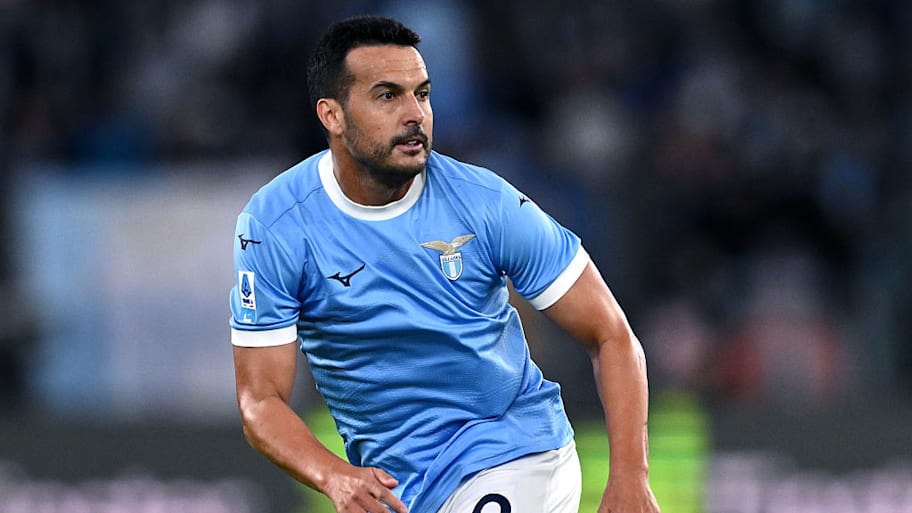
Pedro had been viewed as a bench option throughout most of the World Cup, to then come into Del Bosque’s starting team for both the semifinal and final. It was quite a 12 months after only fully establishing himself at Barcelona with 23 goals during the 2009–10 season.
After a treble in 2014–15, the winger joined Chelsea and secured a Premier League title among several other trophies. He later moved to Roma, but then crossed the Eternal City divide after only one year and, as 2026 nears, is closing in on 200 appearances for Lazio. He’s 38.
Fernando Llorente
The 40-year-old retired striker competes on the World Legends Padel Tour and is a regular pundit for Amazon Prime Video’s Spanish language Champions League coverage.
READ THE LATEST SOCCER NEWS, TRANSFER RUMORS AND MATCH REACTION
This article was originally published on www.si.com as Spain’s 2010 World Cup Winners: Where Are They Now?.

